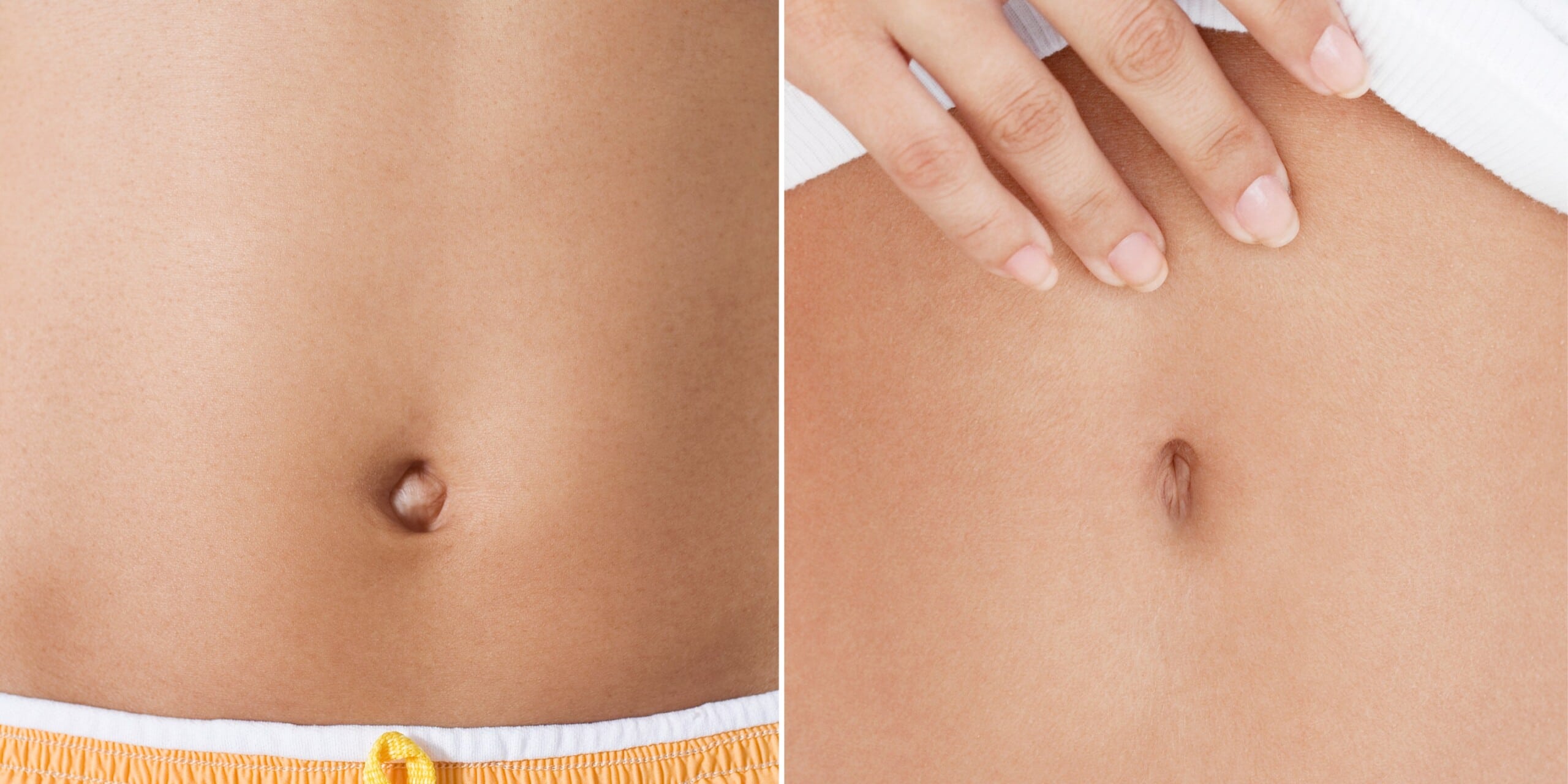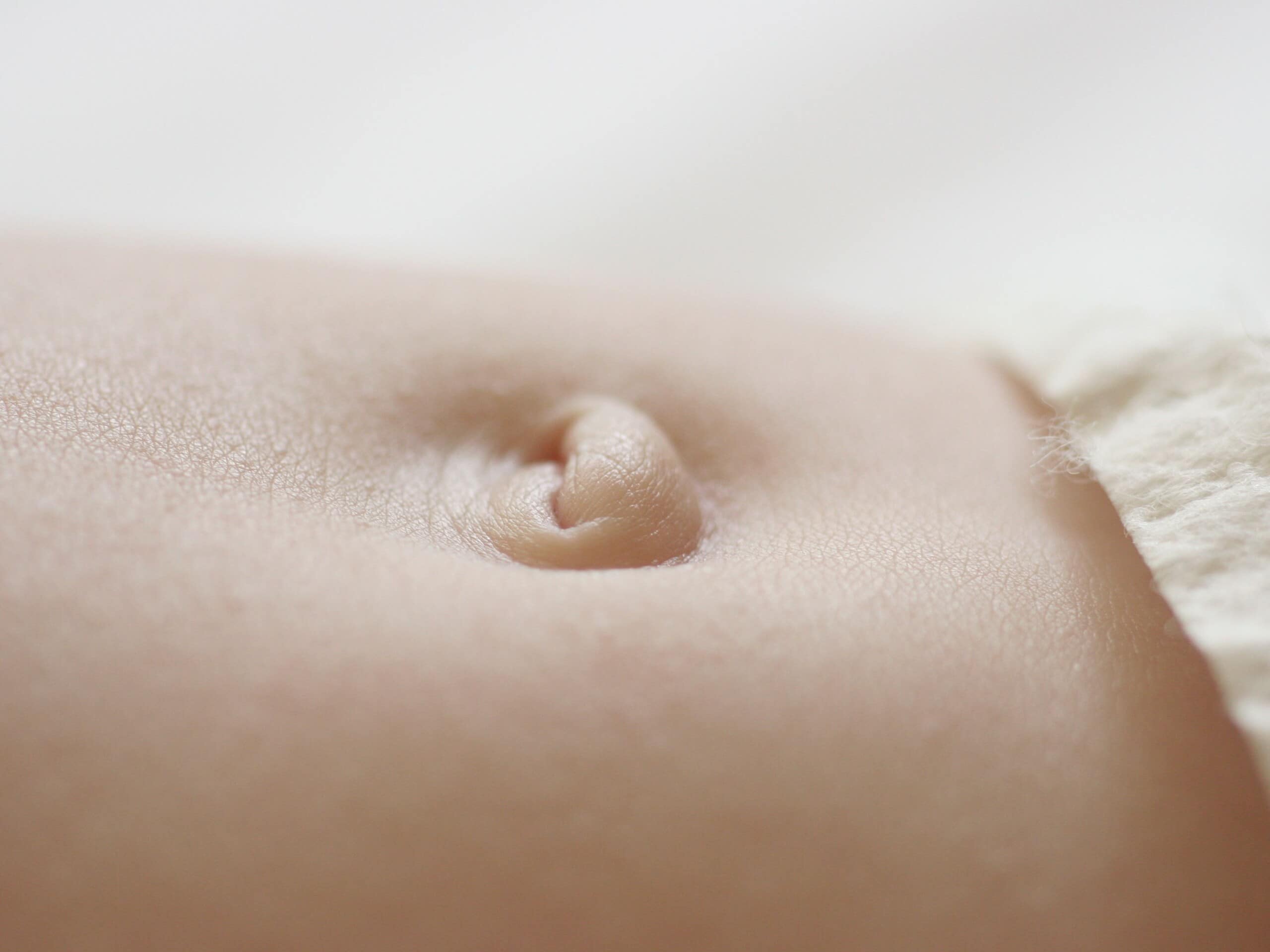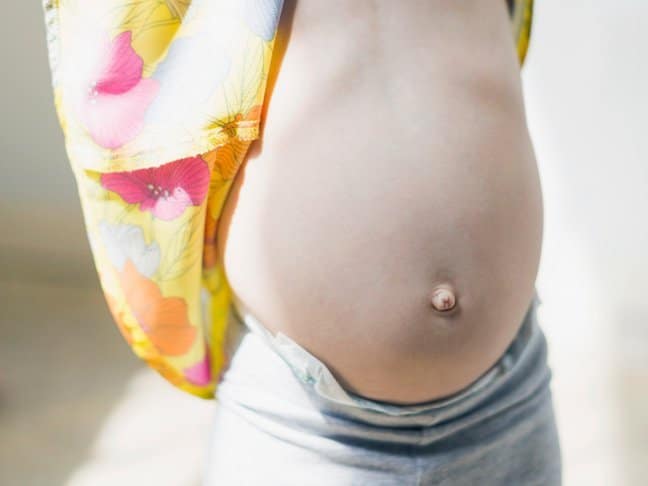Outie Belly Button- Is It Something You Should Be Concerned About?
Your baby has an innie or outie belly button is either by chance or not. You wouldn’t know right away in which way the belly button will grow, just know that innie and outie belly buttons both are healthy. In most cases, having an outie belly button is entirely normal and safe with no medical concerns.
While belly buttons are not at simple as fingerprints, there are still different types of belly buttons out there in different people. The first distribution between belly buttons is an innie or outie belly button. Innie belly buttons are those that appear like a dent in the stomach while the outie belly button looks like a tiny knob sticking out of the stomach.
In babies, some scar tissues below the belly button cause the belly button to protrude thus causing an outie belly button. Also, babies having an umbilical hernia may lead to an outie button.
Is your outie belly button as a result of some issue or just by chance? Let’s find out more on it to know how you got an outy belly button shape while others have innie button.
How the belly buttons are formed?

Your belly buttons act as a reminder of your connection with your mother. It is the place that was once connected to your mother via the placenta or umbilical cord.
When you are born, doctors cut the umbilical cord and a small piece in the left called the umbilical stump. After one to two weeks from your birth, this stump also falls off and only your belly button is the one that remains.
As a result of this, your belly button has a scar essentially. Whether you have an innie or outie belly button, it totally depends on how your skin grows and how fast it heals. Know that most of the time the appearance of your belly button is totally by chance.
How is an outy belly button?
The belly button is also known as the navel or umbilicus. It is really only a scar from your umbilical cord detached as a baby. The way in which the umbilical cord is clamped and cut does not determine how the belly button appears. The belly button forms in an outward or inward direction during your healing process after giving birth.
However, as noted above, there are benign medical issues like the formation of a hernia, scar tissue beneath the belly button, ad inflammation. These factors contribute to the development of an outie belly button.
Know that you cannot blame your parents or doctors on how your belly button appears. Let’s get few things straight and know that your belly button is NOT:
- The result of how the doctors clamped your umbilical cord.
- The results of how the doctor cuts the umbilical cord.
- The result of how your parents have taken care of your umbilical stump after birth.
Also, your belly button does not have anything to do with your size or weight or your stomach’s size and weight. The way your belly button appears is mostly by chance. A person who is obese or overweight might have a small belly button and an underweight person might have a large-sized belly button which might appear as a deep belly button that appears an open mouth.
Also, you might not know this but some people do not even have belly buttons. This is mainly because they were born with a different condition that affected the umbilical cord. Some examples of such conditions include gastroschisis, cloacal exstrophy, exstrophy, etc.
Most of these conditions cause your intestine to form or protrude outside your abdominal all so your umbilical cord does not fall off and create traditional scarring resulting in a belly button.
Causes of outie belly button
An outie belly button often forms naturally and is not something you should be concerned about. However, there are two different types of structural irregularities that might form underneath the child’s belly button thus pushing it outwards.
Umbilical hernia
An umbilical hernia is bulging of the tissues below the site of the umbilicus. The umbilical cord, purposed for delivering nutrients from the mother to the fetus in the uterus. It goes through the abdominal muscles and creates an area for the formation of a hernia. The issue occurs before the birth of the baby and is mostly common among black babies, preemies, and babies born with low weight during birth.
Typically, in the case of an innie belly button, the umbilical ring will close fully in the healing process, but still, an opening persists at that site, then abdominal tissue from beneath can protrude outwards forming an outie belly button. An umbilical hernia is usually present when the baby is born and sometimes it may seem to appear and disappear. This is often known as a reducible hernia. The umbilical hernia most often reduces and resolves on its own by the age of five.
Umbilical Granuloma
An umbilical granuloma is inflamed growth of the tissue and is usually small, it is essentially scar tissue developing at the belly button through the first few weeks of life.
I often appear wet, swollen, and red. Sometimes it may turn into an infection and oozes pus or blood. This condition is not painful usually for the baby unless an infection occurs.
The umbilical granuloma in your baby is often treated either to prevent the infection from occurring or due to infection. Sometimes, home remedies function well to alleviate the condition. Always consult your child’s healthcare provider to know more and treat the infection if you spot any.
Often treatments involve placing salt on the granuloma for nearly 15 minutes 2 times a day for few days. This home remedy often shrinks and dries out granuloma. If not, the doctors may treat it by applying silver nitrate which burns off the excess tissue without causing pain.
Some other treatments include using liquid nitrogen and tying the lumps using a suture until the lump dies off. In extreme cases, even surgeries might be needed.
What Signs You Must Watch For

Along with proper hygiene, watch for these signs of complications in case the child is having an outie belly button.
Umbilical Hernia
If the outie belly button in your child is related to umbilical hernia, monitor your kid for any discomfort and pain in the naval area. An umbilical hernia is generally painless, in fact, the only sign or symptom doctors notice is that the belly button might look slightly herniated or swollen outwards. If the umbilical hernia gets strangulated or the tissues get trapped and constricted within the hernia, it can cause pain but this is rare.
As already mentioned, the umbilical hernia does not necessarily need treatment. The issue usually disappears till your baby turns two or bigger but it may be a cause of concern if it hasn’t gone away by the age of 5 years.
Umbilical granuloma
This particular condition needs prior cleaning to stave off any infection that has developed. Signs of an infection in umbilical granuloma include fever, swelling, discomfort, pain, pus, and oozing.
You require help when you notice these signs in yourself later on or your baby:
- A fever of 100 degrees Fahrenheit or above
- Pain
- Bleeding from the belly button
- Rashes developed on the adjacent skin
- Signs of any infection like swelling, drainage, or pus around the granuloma.
- vomiting
Care tips for a newborn’s outie belly button
You cannot really flatten an outie belly button. In fact, there is absolutely nothing you should do that may damage the belly button. Instead, went the child grows, they will understand this is normal and there is absolutely nothing that should be done to change the appearance of the belly button.
While having an outie belly button is slightly less common than innie buttons, it is still a normal feature of the kid’s appearance. Follow these steps to care for your child’s button area:
- Aim to keep this area entirely clean and dry it once you have cleaned particularly needed when it is covered with a clothing item or a bandage.
- Ask the pediatrician about wiping the belly region with any alcohol swab as some doctors might recommend it looking at the child’s condition while some object to doing so.
- Clean the area using mild soap and water but make sure you do not scrub. Ask the pediatrician to suggest some mild and safe soaps for babies
- Fold the top edge of their diapers to make sure that it does not cover their belly button as this helps to keep the area clean and dry.
- Give your baby sponge baths so that the area remains clean and dry after the first few weeks of their birth rather than submerging their entire body in baby baths.
Changes in belly buttons
Although there is nothing you can do to change or alter the appearance of an outie belly button, there are still some things you must know regarding changes in later stages of life. Few medical conditions might affect the appearance of belly buttons in adults. They are mostly due to some other underlying conditions that insert extra pressure on the belly button causing it to switch from an innie to an outie belly button. These include:
- Pregnancy: When the uterus size increases to incorporate changes in babies, it may cause the belly button of mothers to pop out giving an outie appearance.
- Hepatosplenomegaly- this is a condition referring to engagement of the spleen and liver.
- Ascites- it is a fluid accelerating in the peritoneal cavity due to a disorder with the liver or kidneys.
Usually, when the conditions given above resolve, you will again notice the belly button to become Minnie from an outie.
Without these conditions, doctors call the surgery to adjust and reconstruct the belly button appearance. A process called umbilicoplasty is used and it can be performed as a part of some other cosmetic procedures such as abdominoplasty and tummy tuck.
Umbilicoplasty
When this procedure is performed by the surgeons, they usually perform it by local anesthesia. This means numbing medications are used around your belly button so that you do not feel any pain. The doctors make few incisions and then sew them back in key areas to form a new belly button thus changing the shape.
Because an umbilicoplasty is a minor procedure, there is not a lot of side effects or downtime for recovery. So potential complications still might be there that include tissue death and infections if ht procedure affects the skin’s blood flow. Also, you might not like the way incisions appear and heal.
Is there a risk in the outie belly button?

Know that an outie belly button is entirely common and normal with no harm at all. If you are concerned about conditions like granuloma and hernia, visit a doctor and get your check-up done. A doctor will be able to spot the hernia very well and suggest you wait and watch. There is no harm to the baby’s health in case they have an outie button and it will resolve on its own.
The only time an outie belly button poses risks is the time when the intestines become trapped too.
Granulomas need to be treated so that no infection risk is there later on. A hernia usually disappears and does not need treatment. A simple surgical process can treat the condition after the child turns 4 or 5 years of age.
The Bottom Line
Now that you know everything about the outie belly button, you have understood that it possesses no risk and it is not a medical issue. If you are worried about granuloma or hernia-like conditions, or you have noticed the baby showing signs of pain or infection, call your doctor and talk to them about the condition.
Belly buttons are anatomical wildcards essentially. They are scarred portions in your abdominal wall where your umbilical cord was connected once to your life-giver. Having an innie or outie belly button has nothing to do with your child’s health. They do not need any surgery unless an underlying condition is present.
You can get the diagnosis done to find the cause of pain or infection in the belly button and get the treatment done to avoid complications.

